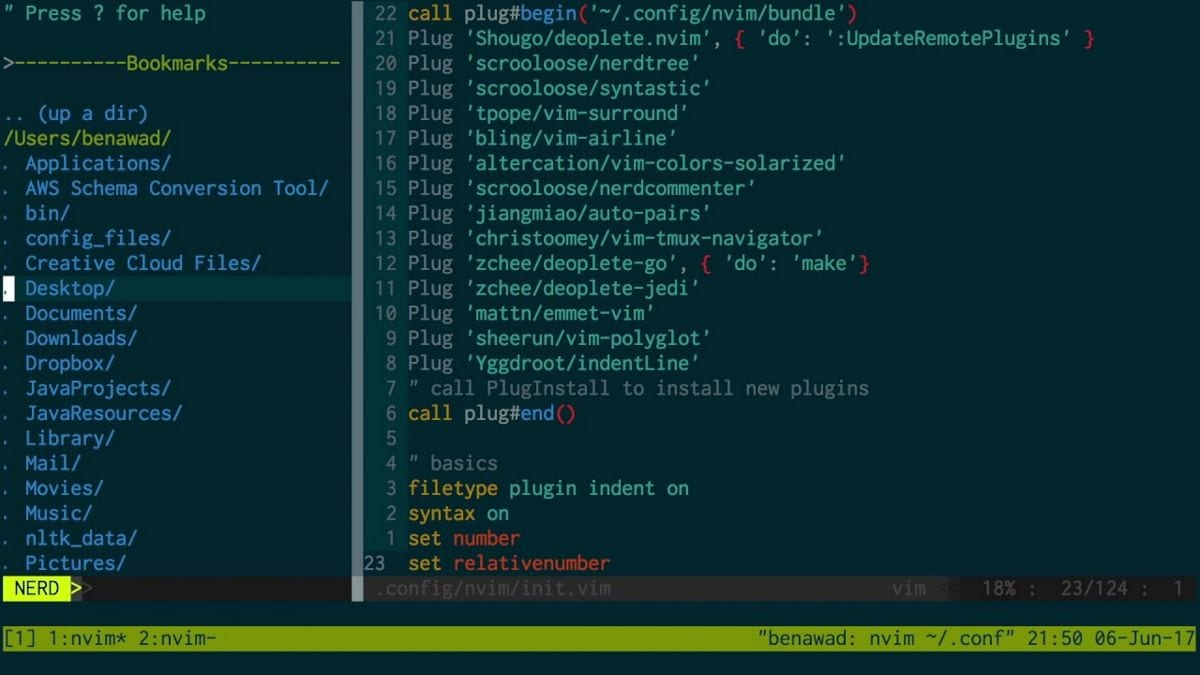
After almost 4 months of development since the last version released (0.6.1) the release of the new version of Neovim 0.7 has been announced (a branch of the Vim editor, which focused on improving scalability and flexibility), which brings with it many new features and, of course, many bug fixes.
For those who do not know about Neovim should know that Under the project, the Vim codebase has been revised for more than seven years, as a result of which changes have been made to simplify code maintenance, provide a means of division of labor between various maintainers, separating the interface from the base part (the interface can be changed without touching the internals) and implementing a new extensible plugin-based architecture.
Among the Vim issues that led to the creation of Neovim is the monolithic codebase of over 300.000 lines of C code. Only a few people understand all the nuances of the Vim codebase, and all changes are controlled by a maintainer. , making it difficult to maintain and improve the editor. Instead of the code embedded in the Vim core to support the GUI, Neovim proposes to use a universal layer that allows you to create interfaces using various toolkits.
Main news of Neovim 0.7.0
In this new version of Neovim 0.7.0 that is presented, it is highlighted that initial support for remote work is offered, which allows users to be able to run Neovim on a server and connect to it from a client system using a separate ui_client.
In Neovim 0.5 the introduction of Lua was made and now in this new version 0.7.0 Lua can now be used in almost everything, the user's home file, plugins, color schemes, ftplugins, etc. It is worth mentioning that there were still some shortcomings in the Lua API at the time.
In addition to this, it is noted that In Neovim 0.7 there is a new (experimental) way to do file type detection. A quick introduction to file type detection, for example when I know when you first start Neovim, it generates a file called filetype.vim in the $VIMRUNTIME directory. This file creates several hundred automatic commands whose sole purpose is to infer the file type of the file based on information about the file, most commonly the file name or extension, but sometimes also using the file's content.
Other changes include:
- Support for Python 2 has been discontinued,
- Lua functions allowed in keymap
- Added new commands to the API
- Significantly expanded the ability to use the Lua language for plugin development and configuration management
- tools to diagnose problems in the code has been improved
- Added support for global status bar
- Performance optimizations have been made.
- The capabilities of the built-in LSP (Language Server Protocol) client have been extended, which can be used to move code completion and parsing logic to external servers.
Finally if you are interested in knowing more about it of this new version, you can check the changes in the following link.
How to install NeoVim on Linux?
Now, in the case of installing this new version on Linux, it is important to emphasize that Neovim is in the majority from the repositories of the most popular distributions and the installation can be done by running a simple command.
En Arch Linux and its derivatives They just have to open a terminal and in it they are going to type the following command:
sudo pacman -S neovim
While for those who are users of Debian, Ubuntu and derivatives You can install the new package by executing the command in the terminal:
sudo apt install neovim
In the case of those that are Fedora users and derivatives:
sudo dnf install neovim
Users of openSUSE:
sudo zypper install neovim
Finally for the Gentoo users
emerge -a app-editors/neovim